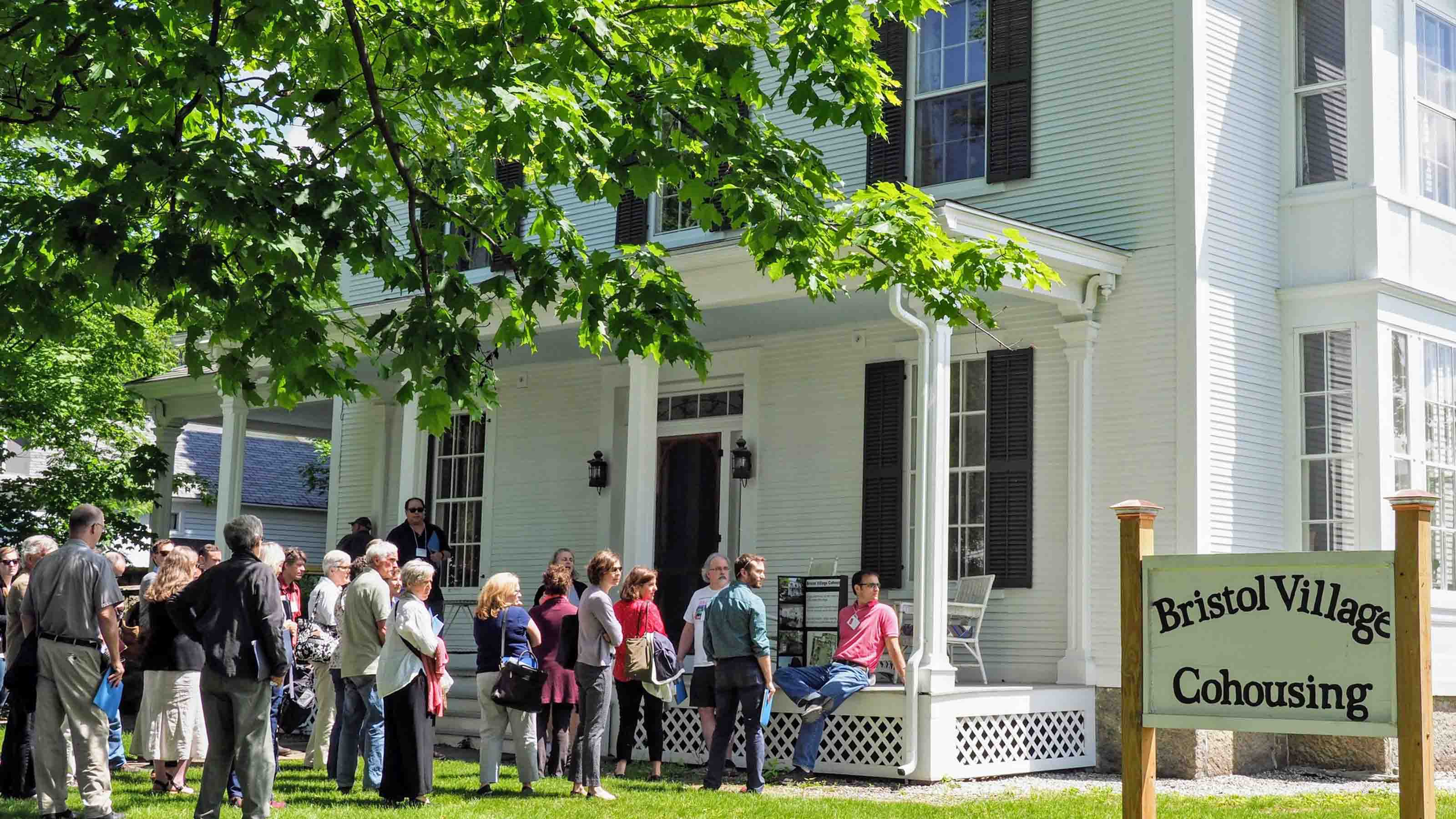Remodel Your Current Home With Retirement in Mind
Upgrade with universal-design features that will help you as you age. It's all about convenience now, and saving money and safety later.

Most people in their thirties and forties don't spend much time thinking about their retirement, let alone planning for it. Sure, they participate in their company's 401(k) plan. Maybe they've opened an IRA. But they're busy building a career, buying a home, or figuring out how to get one kid to soccer practice and the other across town to band recital at the same time.
Then, at some point during the fiftysomething years, it hits most of us: Retirement isn't all that far off. It's time to look more closely at your 401(k), IRA and other savings, plug some guesstimates into online retirement-savings programs, and take long walks with your partner talking about the next stage of life.
"Honey, what about the house?" The most popular answer among middle-aged homeowners is they'd like to stay put. Your home's value may have taken a knock from the housing bust, and there are too many memories in every room to leave behind.

Sign up for Kiplinger’s Free E-Newsletters
Profit and prosper with the best of expert advice on investing, taxes, retirement, personal finance and more - straight to your e-mail.
Profit and prosper with the best of expert advice - straight to your e-mail.
Like other aspects of retirement, aging in place requires turning your desires into practical planning. So, as you start to weigh that remodeling project you've been putting off, don't just look at the cost of installing granite countertops in the kitchen, or dual sinks and towel warmers in the bathroom. What home improvements would make your home safer and more convenient for you in your old age? "If people are planning to stay in the home -- say, they're now 55 and they'll stay until they're 70 - 75 -- they should be thinking about how to make aging in place feasible," says Jon Pynoos, professor of gerontology, policy and planning at the University of Southern California.
The trend toward remodeling projects with aging in mind is growing, but slowly. It appears that many middle-aged homeowners are reluctant to put "aging in place" on their wish list. The reason: People don't think features that make a home convenient for aging occupants will be attractive.
We've all driven by homes with a big ramp up to the front door, or visited an aging relative and stared at bathroom equipment reminiscent of a hospital room. "People don't want to think of themselves as getting old and needing grab bars and things like that in the home," says Kermit Baker, senior research fellow at Harvard University's Joint Center for Housing Studies. "Even people in their fifties and sixties aren't thinking about their needs in 20 years."
Too bad. Plenty of remodelers these days will cater to homeowners who are planning to age in place and want to start installing features now, while it's convenient, that will make life easier for them when they get older.
The best-known movement is called universal design, which incorporates attractive, easy-to-use appliances and other devices. So don't worry that you have to turn your house or condo into an assisted-living center.
Universal-design accessories and accommodations may add about 5% or more to a project's upfront cost (depending on the project). But think of it this way: With a little preparation, you won't need to call in a pricey contractor to do a rush job if you have a bad fall ten years from now. "There is no money savings on the front end," says Richard Duncan, executive director of the RL Mace Universal Design Institute in Chapel Hill, N.C. "A big advantage of doing the changes now is reduced remodeling costs later on."
What are some universal-design mainstays? A simple one is substituting door handles for doorknobs. The handle material and design, which can match the décor of your home, will make it easier to open doors with arthritic hands.
Older folks need more light and are more sensitive to glare. Lights with extra illumination and lighting controls can be incorporated into a kitchen remodel.
European-style showers are sophisticated and don't have a lip, allowing wheelchair access as well as a way to wash plants and even the dog. You don't need to put a grab bar in the shower now -- but why not install the plates during a bathroom remodel so that a grab bar can be quickly attached later? "These things should be part of the design rather than something separate to be added later on," says Pynoos.
If you do decide to remodel this year, you'll have plenty of company, and soon -- spring appears to be coming early to the housing market. After years of falling real estate values, it appears the market is finally stabilizing, due to the combination of lower unemployment, low interest rates and low home prices. In similar fashion, remodelers are getting back to work: The Joint Center for Housing Studies of Harvard University expects inflation-adjusted spending on homeowner improvements to grow at a 3.5% compound annual growth rate from 2010 to 2015. That is in sharp contrast with the 1.4% decline in remodeling spending from 2005 to 2010, though it pales next to the 7.3% growth rate of the bubble years, 2000 to 2005.
Many of today's remodeling projects will be undertaken by middle-aged homeowners who are happy to stay in their home and make everyday living more comfortable. If you're one of them, remember that remodeling your home is as integral to your retirement plan as your asset allocation in your 401(k).
Profit and prosper with the best of Kiplinger's advice on investing, taxes, retirement, personal finance and much more. Delivered daily. Enter your email in the box and click Sign Me Up.

-
 Ten Cheapest Places to Live in Virginia
Ten Cheapest Places to Live in VirginiaProperty Taxes The Commonwealth of Virginia has some cheap places to live. Here are a few if you hate paying property taxes.
-
 Strong April Jobs Report Lowers Rate-Cut Hopes: What the Experts Are Saying
Strong April Jobs Report Lowers Rate-Cut Hopes: What the Experts Are SayingThe June jobs report shows that hiring remains strong and gives the Fed a little extra breathing room when it comes to interest rates.
-
 Retire in the Bahamas With These Three Tax Benefits
Retire in the Bahamas With These Three Tax BenefitsRetirement Taxes Retirement in the Bahamas may be worth considering for high-net-worth individuals who hate paying taxes on income and capital gains.
-
 The Problem With 401(k) Catch-Up Contributions for 2024
The Problem With 401(k) Catch-Up Contributions for 2024Retirement Plans New rules governing certain 401(k) catch-up contributions caused confusion and raised concern.
-
 Half of Mothers Have Little or No Retirement Savings
Half of Mothers Have Little or No Retirement SavingsMother’s Day comes and goes, but many moms face future financial insecurity because they have little or no retirement savings.
-
 Retirees: Cohousing is Growing. Is it Right for You?
Retirees: Cohousing is Growing. Is it Right for You?This model of housing is designed to increase interaction. For some retirees, this is a draw. But you should know the details.
-
 Caregivers Share Their Stories
Caregivers Share Their StoriesCaregiving Readers' own perspectives on the struggles and triumphs of caregiving.
-
 Now You Can Own Bitcoin in 401(k)s. Should You?
Now You Can Own Bitcoin in 401(k)s. Should You?cryptocurrency Fidelity will begin allowing investors to put Bitcoin in their 401(k)s. But is this retirement vehicle the right place to hold crypto?
-
 Start the Elder Care Conversation
Start the Elder Care Conversationlong term care Many people don't have a plan set where an elderly parent will go. Do you?
-
 The Stresses of Being a Caregiver
The Stresses of Being a CaregiverCaregiving One study shows that caregiving takes a greater toll on retirees' mental health than on their finances.